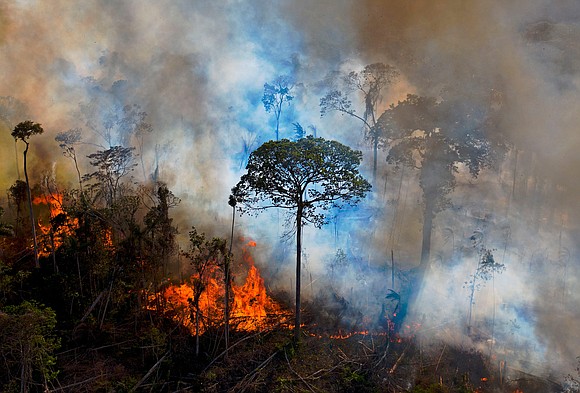Habitat and species loss leaves just 3% of world's land ecosystems intact, study suggests
CNN/Stylemagazine.com Newswire | 4/15/2021, 9:47 a.m.

By Laura Smith-Spark, CNN
(CNN) -- Just under 3% of the world's land remains ecologically intact, with undisturbed habitat and minimal loss of its original animal species, a new study suggests.
The research, published Thursday in the journal Frontiers in Forests and Global Change, combined maps showing human damage to habitat with maps showing where animals have disappeared from their original ranges or are too low in number to maintain a healthy ecosystem to reach its conclusions.
The study paints a gloomier picture than previous analyses of wilderness areas, focused on human impact on habitat, which estimated that 20 to 40% of the earth's terrestrial surface has been little affected by humans.
"Areas identified as functionally intact included east Siberia and northern Canada for boreal and tundra biomes, parts of the Amazon and Congo basin tropical forests, and the Sahara Desert," according to the authors.
The researchers, led by Andrew Plumptre, from the Key Biodiversity Areas Secretariat and BirdLife International, based in the UK city of Cambridge, looked at three types of intactness to assess ecological integrity.
These are habitat intactness, or the degree to which human activity has affected the land, faunal intactness, or the loss of animal species, and functional intactness, which assesses whether there are enough animals of the individual species for the ecosystem to remain healthy.
"While wilderness areas are increasingly recognized as important for biodiversity conservation, few areas of the world remain that can be characterized as having outstanding ecological integrity," the authors wrote.
"We found that only 2.8% of the terrestrial surface of the planet is represented in areas of 10,000 km2 or larger with low human footprint, no known species loss and no species known to be reduced below functional densities."
Only 11% of the areas identified by the researchers as functionally intact are included within existing protected areas, the study notes. But, it adds, "many of the areas identified as ecologically intact coincide with territories managed by indigenous communities, who have played a vital role in maintaining the ecological integrity of these areas."
The study, which did not include Antarctica, is far from the first to highlight the threat posed by humankind to the world's ecosystems.
In January, a team of leading international scientists warned that accelerating climate change and biodiversity loss threatened the survival of all of the planet's species unless world leaders took urgent action.
And recent research from the World Wide Fund for Nature found that the world's wildlife populations have fallen by an average of 68% in just over four decades, with human consumption behind the devastating decline.
Some scientists believe a sixth mass extinction is gaining pace, and humans are in the driving seat, having already wiped out hundreds of species and pushed many more to the brink of extinction through wildlife trade, pollution, habitat loss and the use of toxic substances.
Targeted reintroduction
In the latest study, the researchers suggest that some ecosystems could be restored by bringing back certain key animals.
Reintroducing up to five important species, such as forest elephants or giraffes, to areas where the habitat remains undamaged but fauna have been lost could increase the percentage of the earth's land surface identified as faunally intact by up to 19%, using a minimum area of 10,000 sq. km., they say.
"These areas will likely be located in eastern Russia, northern Canada and Alaska, the Amazon Basin, parts of the Sahara, and the Congo Basin," the study said.
"Examples would include reintroducing forest elephants in areas of the Congo Basin where they have been extirpated, or reintroducing some of the large ungulates that have been lost from much of Africa's woodlands and savannas because of overhunting (e.g., buffalo, giraffe, zebras etc.), as long as overhunting has ceased."
Other factors to consider would include whether enough animals of the required species exist elsewhere for a healthy, sufficiently genetically diverse, population to be reintroduced, it adds.
The study suggests that data analyzing the human footprint in wilderness areas, often based on remote sensing tools, highlight habitat loss but don't always account for such threats as invasive species and hunting by humans. Habitats that appear intact are often missing large, wide-ranging species that play important ecological roles in the ecosystem, it adds.
The researchers acknowledge that the datasets applied in their analysis "are the best we could compile at a global scale" and that more detailed analyses of human footprint, species loss and population densities of important species would be possible if smaller areas were studied.
"In particular, we selected a subset of large mammals to assess functional density, choosing species that were relatively widespread and likely hunted, as surrogates for other species. Few species have their density mapped across their global range and we compiled what we could find that was relevant to the analysis," they added.






